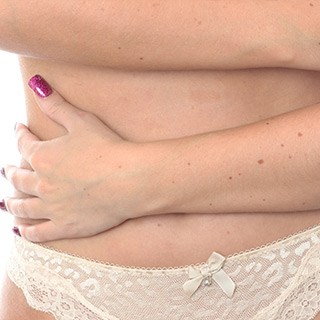Move, Thrive, “Get Your Sexy Out”
 By Claudia Cheyne-Cook, CLM
By Claudia Cheyne-Cook, CLM
What do you do after your surgeon, oncologist, and radiologist say goodbye? You Stretch, Move, Dance, Thrive, “Get Your Sexy Out”.
In so doing you find that your body can, once again, be used as an instrument of joy; and that the road to recovery and wellness can be fun. A sense of confidence, grace and sexuality is rediscovered with the employment of safe, enlivening movements. The use of the entire body; orchestrating hands, arms, torso, hips, legs, and feet to motivating rhythms delightfully releases inhibitions giving voice to “getting your sexy out”. The release of endorphins enhances the experience of moving and becoming stronger with heightened feelings of well-being.
It makes sense that health and vigor equal thriving. The body is a biomechanical genius in which muscles, tendons, bones, blood, lymphatic system, and organs are healthiest when active. There are many studies corroborating regular exercise and survivorship. Numerous studies also state that exercise during breast cancer treatment can actually reduce fatigue and nausea. According to research compiled from 136 studies, “physical exercise has consistently been identified as a central element of rehabilitation. Recent observational evidence suggests that moderate levels of physical activity may even reduce the risk of death from breast cancer, and therefore exercise may prove to be a valuable intervention to improve not only quality of life; but overall survival.” The affects of exercise vary from individual to individual, and may cause some initial discomfort, but when done with proper guidance and supervision the overall benefits can greatly improve one’s quality of life.
One should be mindful that not only the physiological, but also the psychological ramifications of this disease and its treatment be considered when looking for an exercise regimen that is right for the survivor.
The physiological effects of cancer treatment, although unintentional, have great ramifications for many individuals that affect their daily lives. These side effects vary from person to person. Chemotherapy, and radiation can be very damaging to normal tissue, body functions, and will vary with each individual. Some of the physical benefits exercise may offer are:
- Increased joint range of motion when slow, smooth movements are employed that gently stretch and reduce scar tissue restriction
- Enhanced muscular development, strength, flexibility, and weight stabilization
- Improved posture and structural rebalancing to help off set the changes that occur with the loss of body tissue
- Reduction of pain with the release of endorphins
- Improved oxygen to muscle tissues and brain, and increased circulation
- Diminution of fatigue
- Strengthening the core
- Assuaging of swelling in extremities from lymphedema (an unintentional consequence of surgery and radiation)
The mental and emotional effects of breast cancer and its treatment are equally important to address. They can be subtle, and more difficult to measure than the physical indications. Some of the benefits one may experience psychologically with an exercise program are:
- Increased sense of confidence, and sexuality
- Reduced stress
- Lifted spirits
- Learning to love a changed body
- Improved sleep
- Support from like-experienced individuals in a group class
Thousands of the 2.5 million breast cancer survivors in this country are benefiting from a group exercise and movement program to music. The Lebed Method Movement and Exercise Program was developed by two physician/surgeons and a dance professional primarily for breast cancer survivors. It is offered in over 700 hospitals, centers, and some health clubs. Since 1980 this program’s therapeutic benefits have proven beneficial to many of those struggling along the, oftentimes difficult, road toward wellness. This unique, sensitive, international program, validated by numerous studies and published in a medical journal, promotes well-being, joy, and transforms class members from survivors to thrivers while gently launching them to higher levels of lifestyle wellness.







